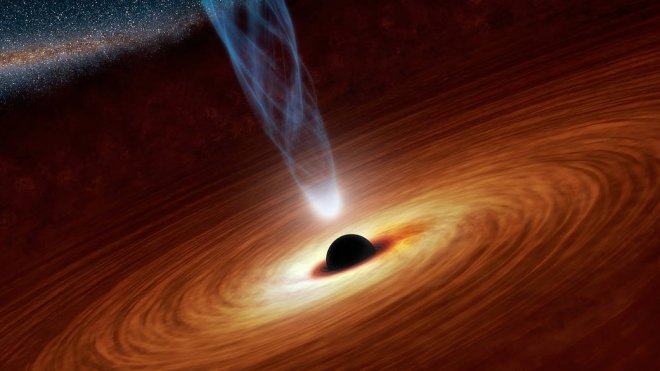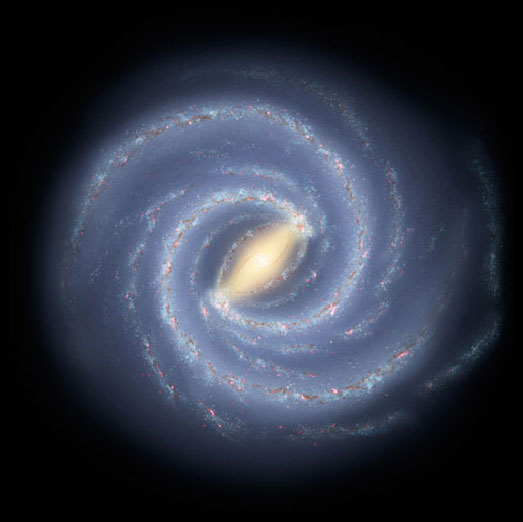
Scientists believe that the Primordial black holes are formed during the early phase of Universe soon after the big bang. These black holes, with very strong gravity, do not allow even the light to escape from them, which could be observed only through specially designed space telescope.
The size and mass of the black holes categorize it to its three known forms. The smallest form of black hole or the primordial black hole is as small as a single atom with huge engulfed mass.
Medium sized black holes known as "stellar" would have 20 times the mass of the sun and the diameter of 10 miles. Supermassive black holes which are the largest in the set would have masses greater than 1 million Suns with the diameter as much as the size of the Sun.
Formation

Stellar black holes form when a massive supernova explodes and collapses into its center. The supernova explosion also sets off huge quantities of mass and energy of the star into space.
Meanwhile, the supermassive black holes are formed at the time of birth of a galaxy. It was believed that every galaxy has a supermassive black hole in its center. The gravitational force of these supermassive black holes plays important role in the birth and the growth of the galaxies.
Detecting black holes

Even though black holes cannot be seen, its presence could be detected by studying nearby stars and gases. Scientists study stars which orbit certain points in the sky as the clue for the presence of a black hole.
Scientific instruments could observe the high- energy light formed when a black hole and a star are orbiting close together. Sometimes black hole's gravity would be strong enough to pull all the outer gases of a star to form a glowing disk called accretion disk around it. Accretion disk spirals into the black holes to heat up the gases which release X-rays in all directions.
Telescopes measures these X-ray lights to determine the location and properties of the black hole.
Chances of Sun turning to a black hole

Scientists say that the Sun does not have sufficient mass to turn into a black hole. The Sun during its end stage would become a red giant star and would later turn into a ring of gas called Planetary Nebula when its entire fuel gets used up. The scientists predict that the Sun would turn in to a white dwarf star once it cools down.
Importance of Blackhole studies

Space telescopes like the Chandra X-ray Observatory, the Swift Satellite, and the Fermi Gamma-ray Space Telescope makes intensive studies on the black holes. These research could help the scientists to know about the origin, evolution, and destiny of the Universe.









